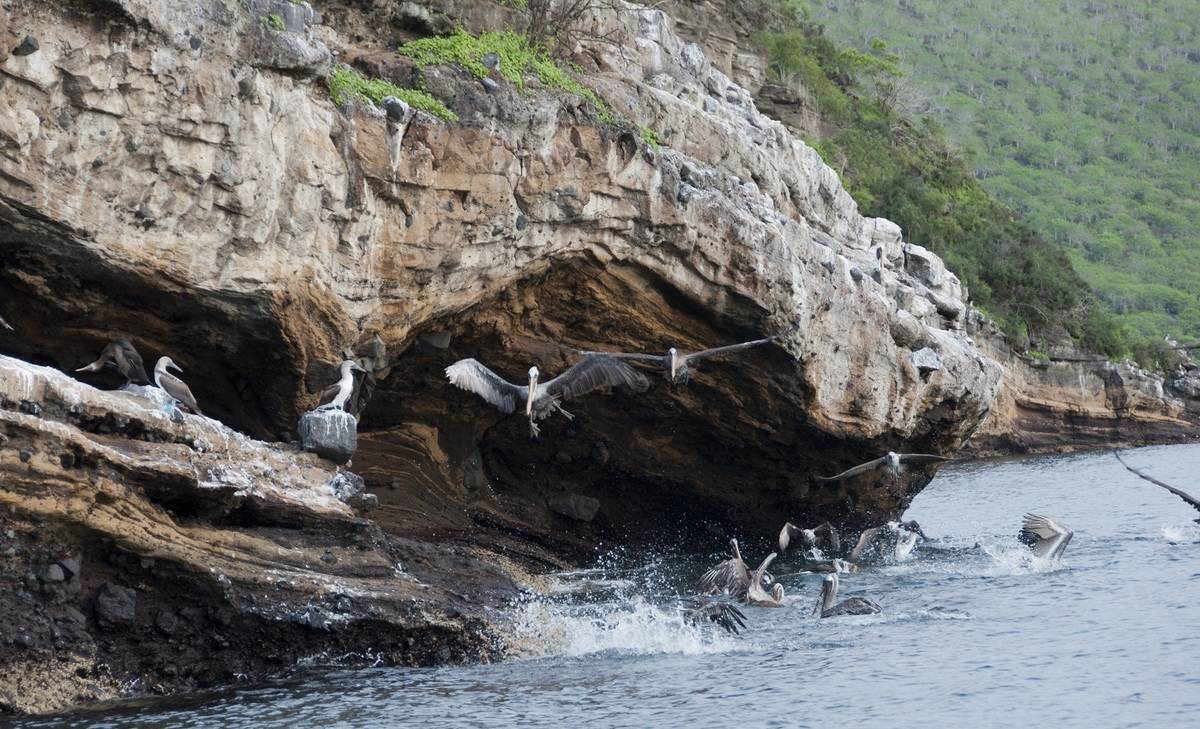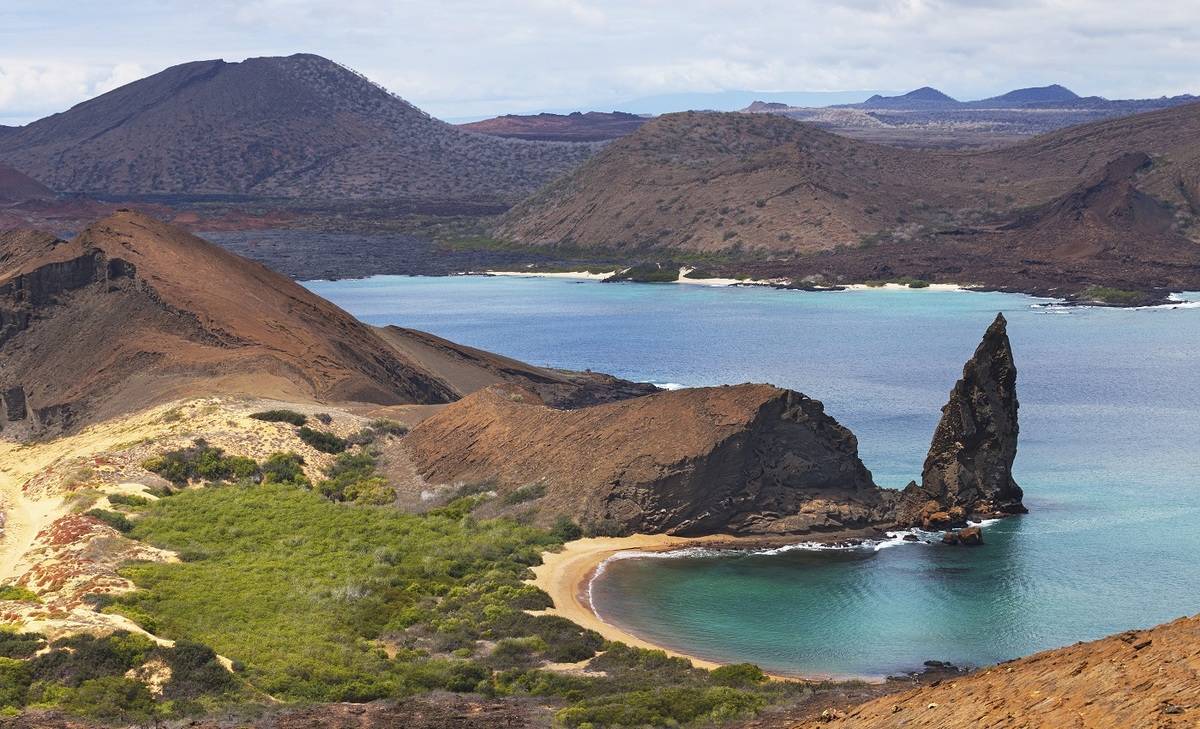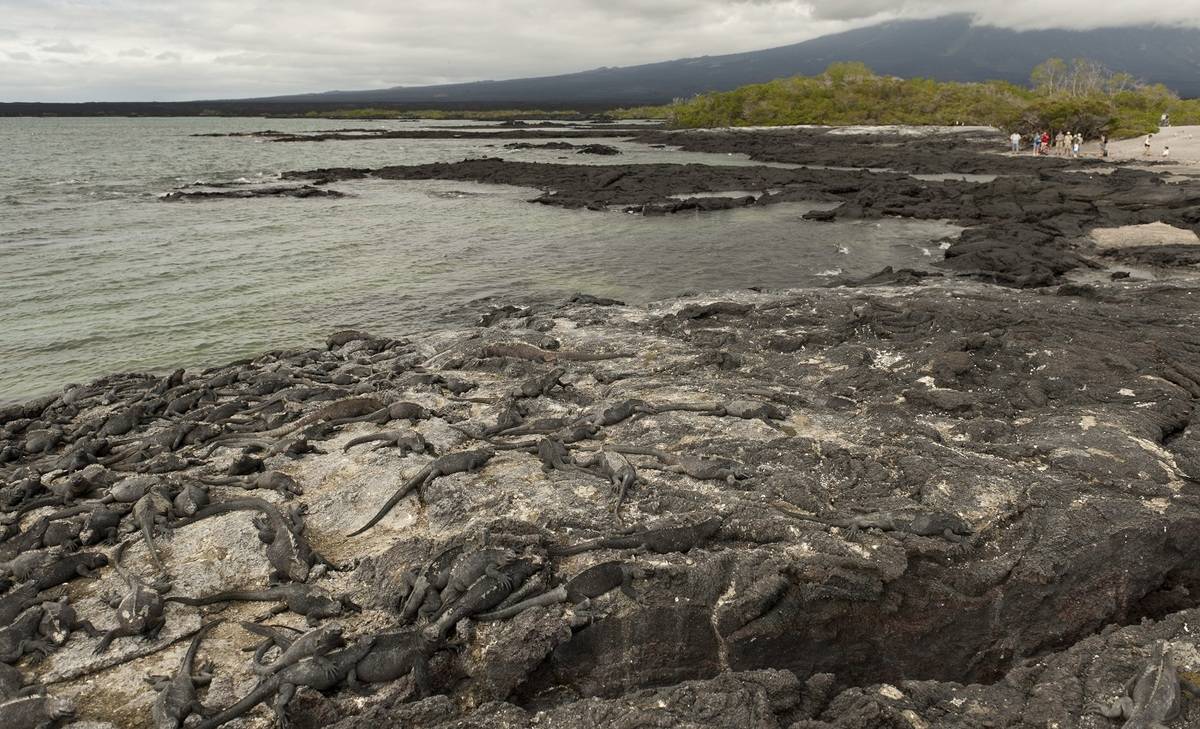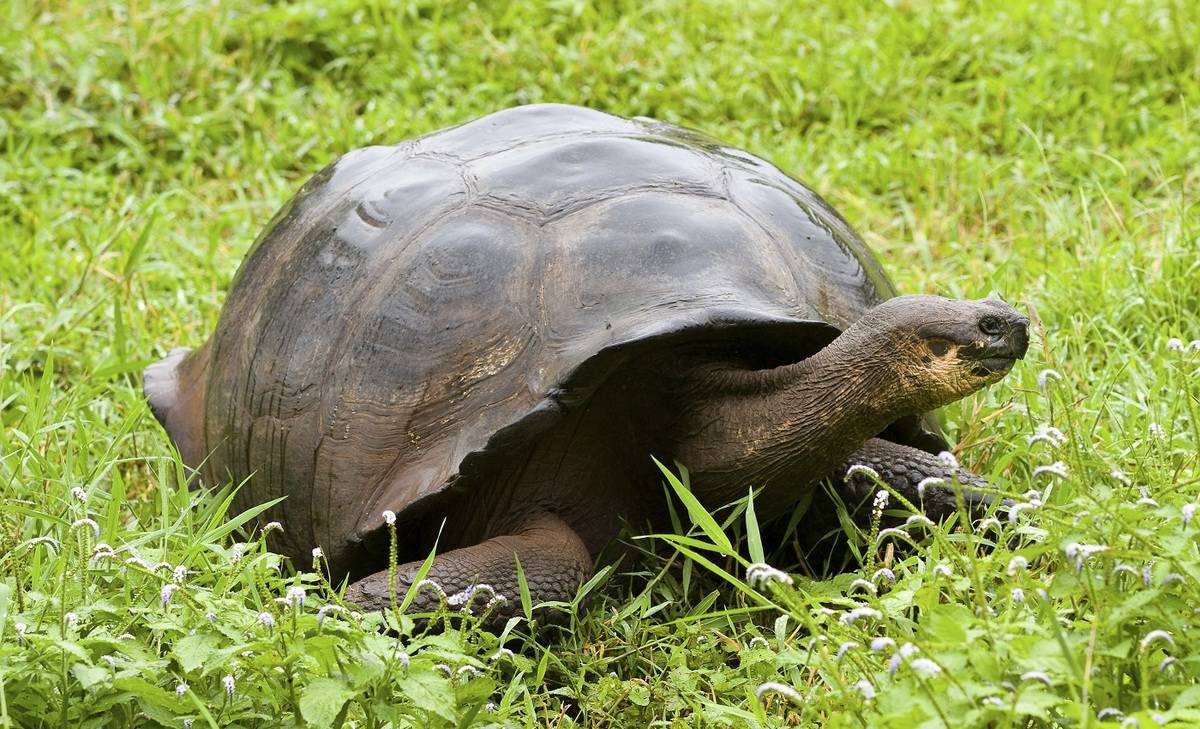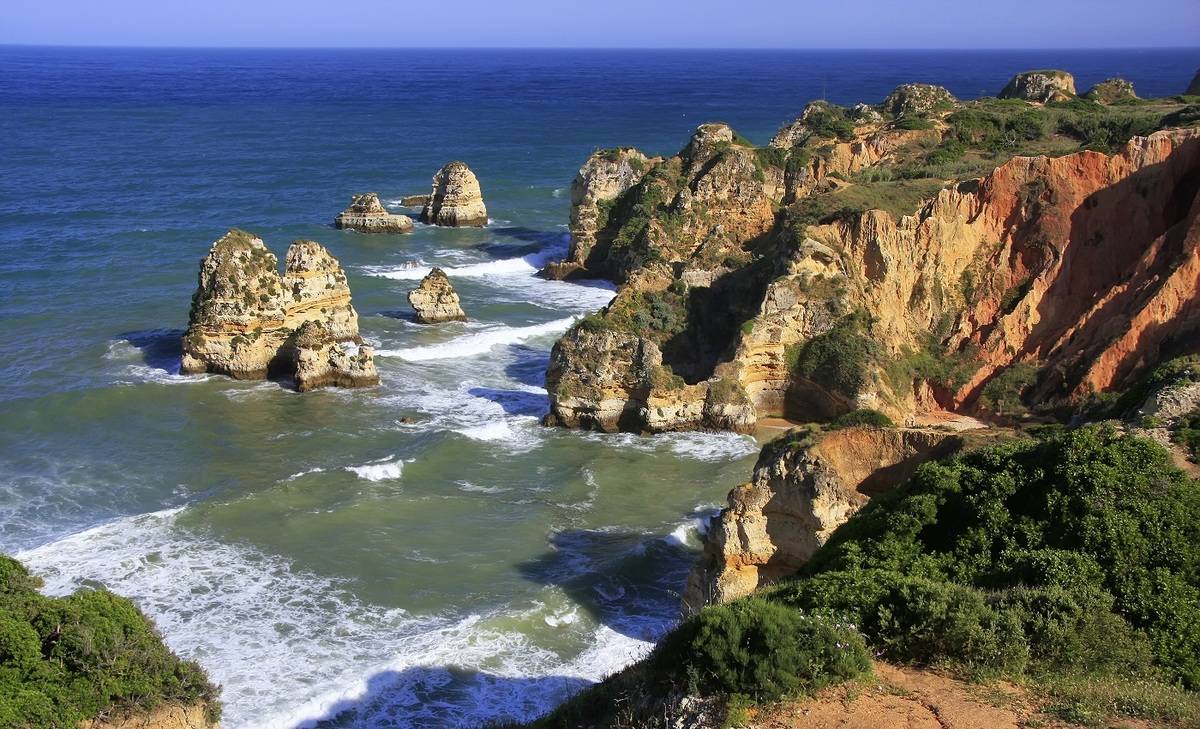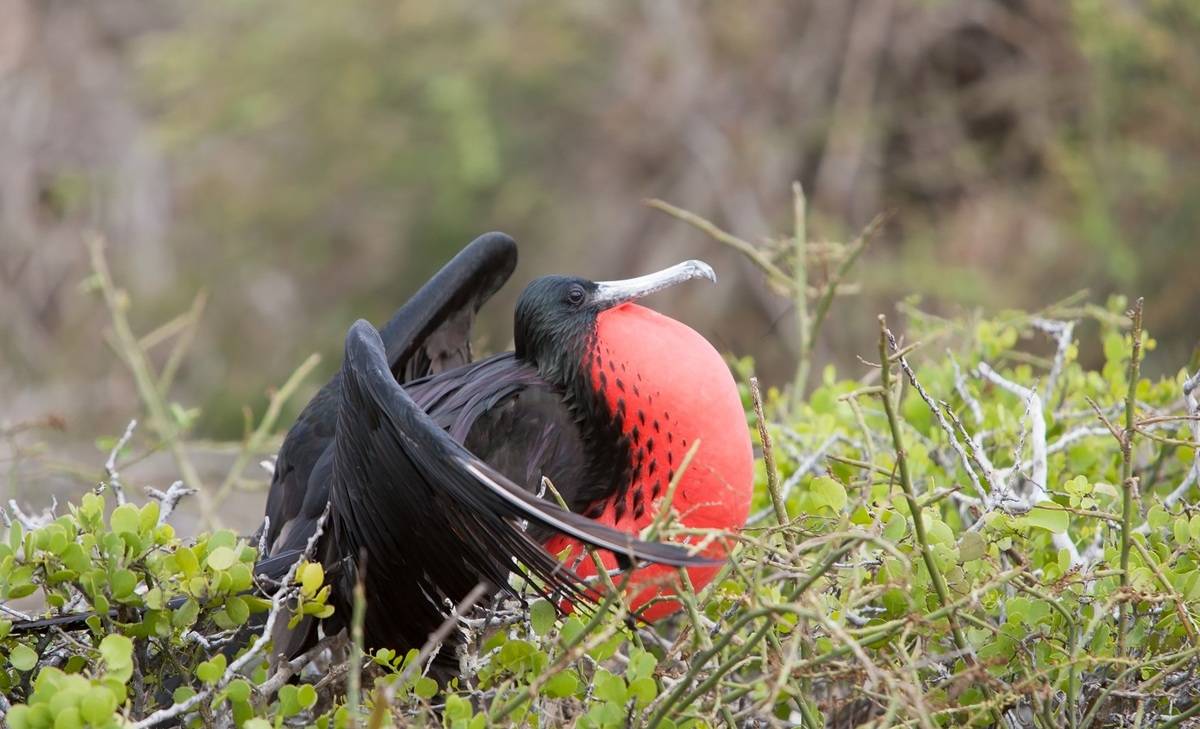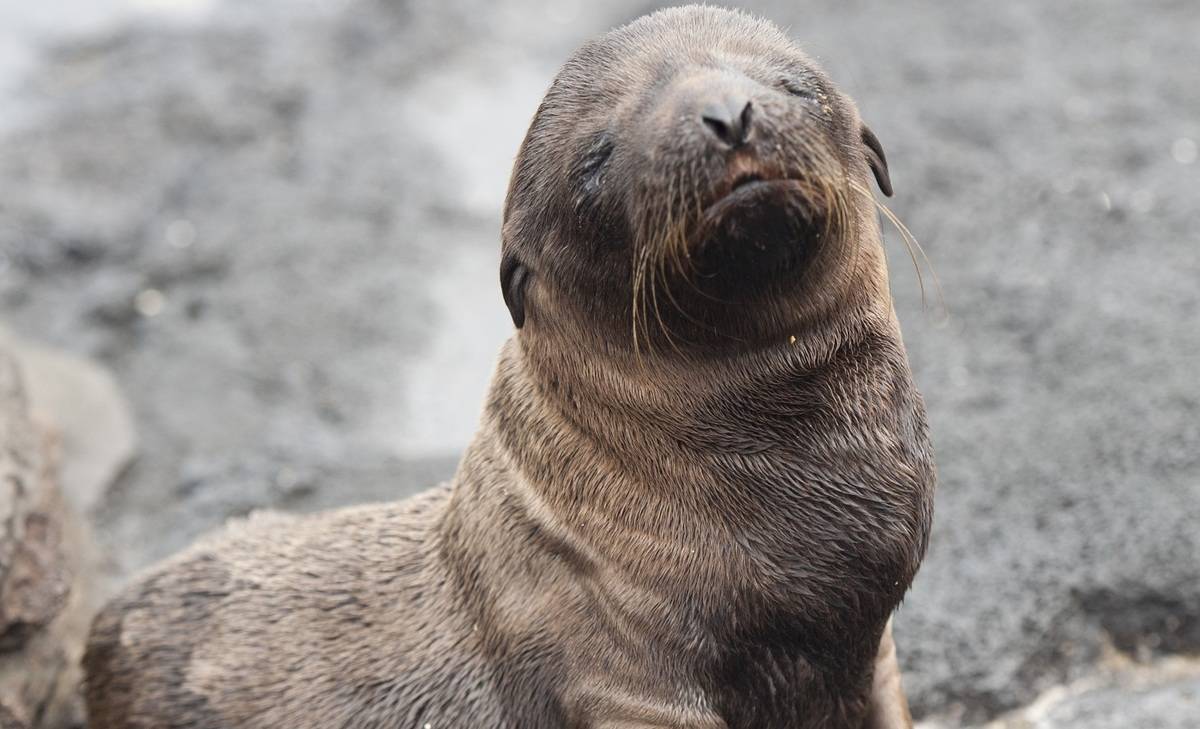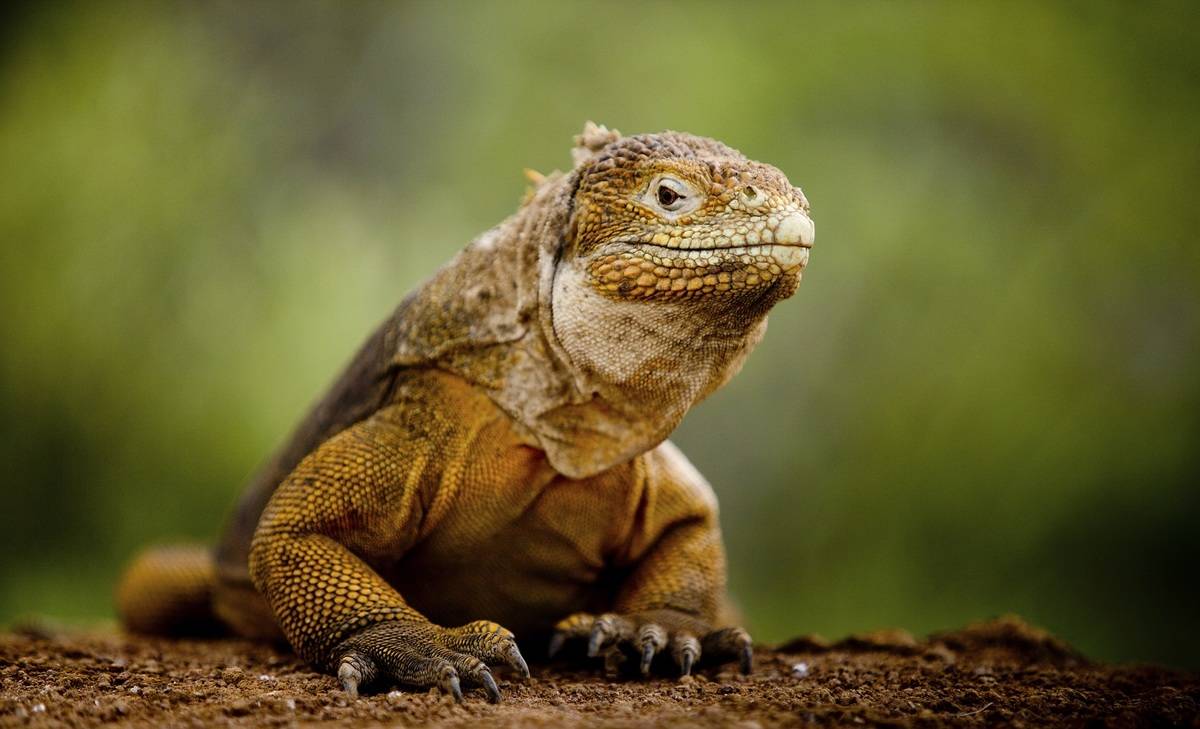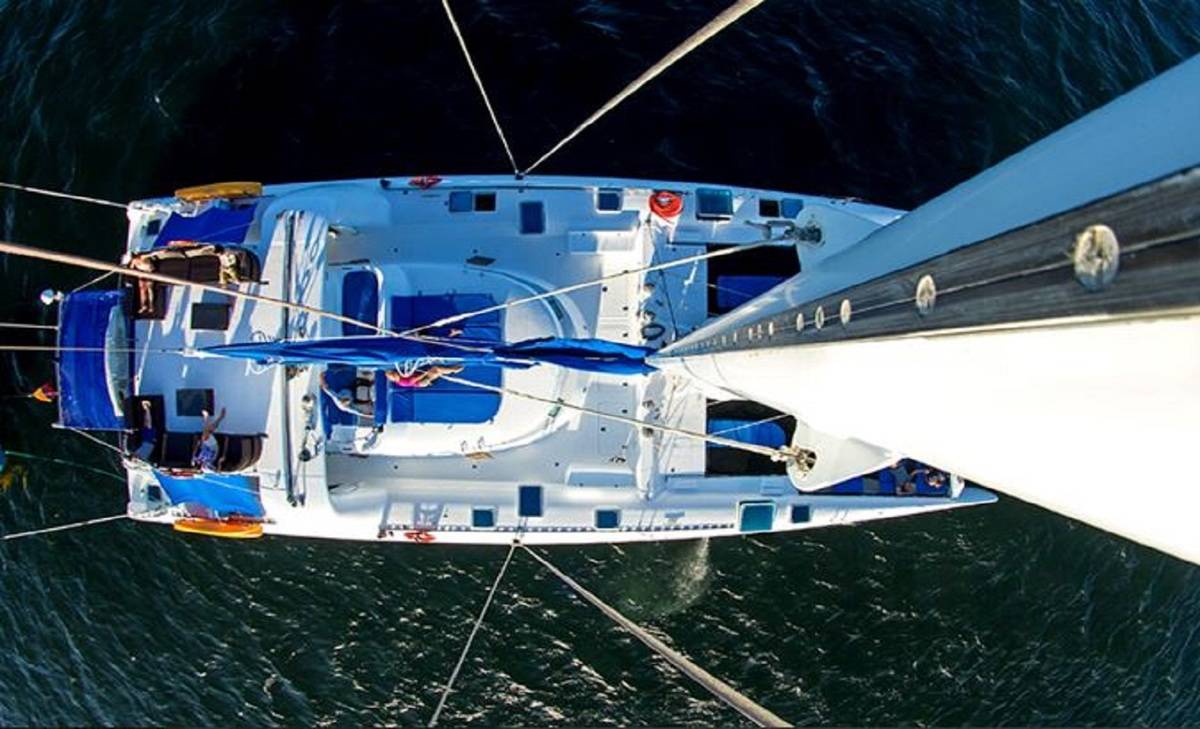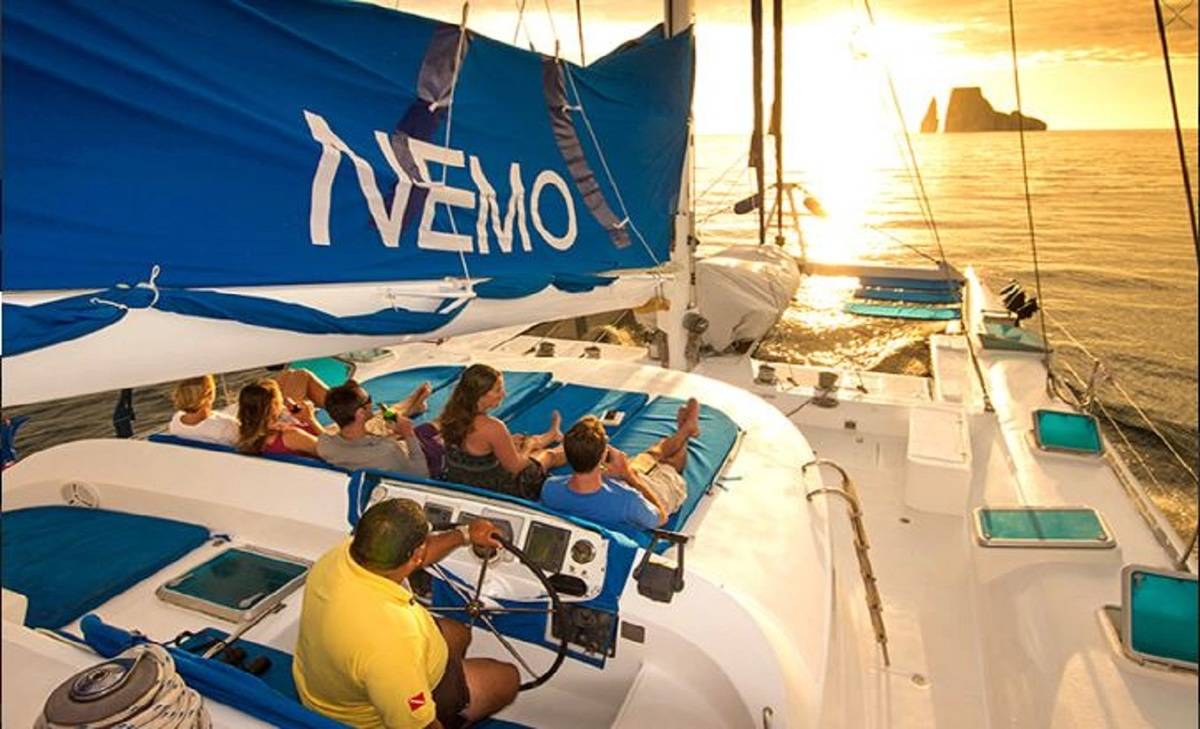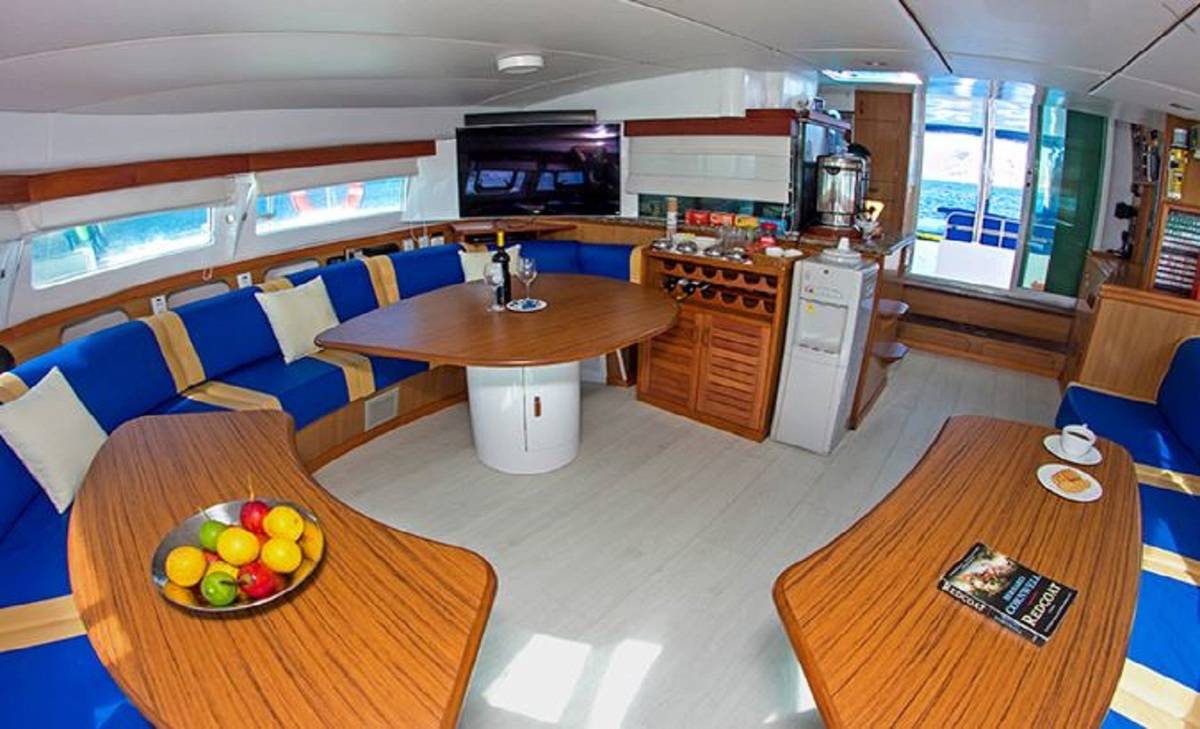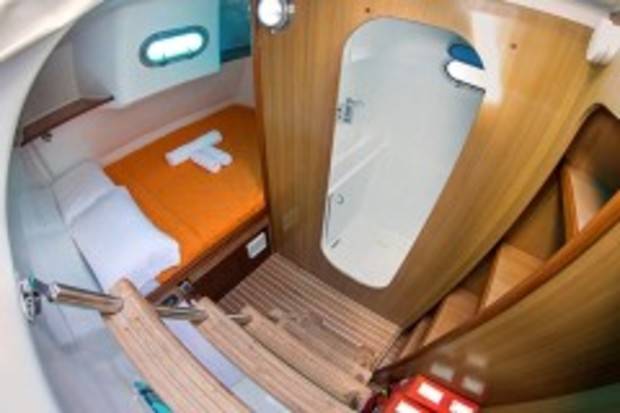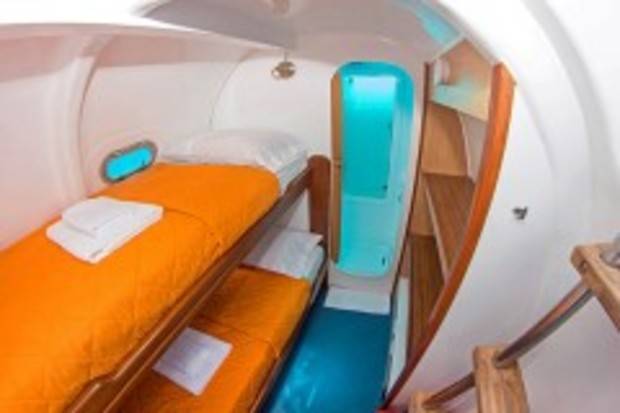Central and Western Galapagos Islands (A8)
8 Days - Nemo I
The Nemo I will give you the opportunity to cruise around the pristine islands and observe the amazing wildlife both on land and underwater. Here you can witness the rare wilderness where animals have no instinctive fear of humans. The Nemo I will provide you with the opportunity to explore the 'living museum and showcase of evolution' while being comfortable and cruising in style.
from USD $3500pp

Home » Nemo I: North & West Galapagos Islands
Itinerary Highlights
- Observe an abundance of amazing wildlife such as; magnificent frigate birds, blue- footed boobies, swallow- tailed gulls and sea lions
- Swim and snorkel in the magnificent coral sand beach
- Explore Urbina Bay, which is home to large and colourful land iguanas and giant tortoises
- Go hiking towards the Sierra Negra volcano rim
Itinerary in Brief
- Day 1: Baltra - Bachas Beach
- Day 2: Genovesa: Darwin Bay - El Barranco
- Day 3: Rabida - Bartolome
- Day 4: Santa Cruz Highlands - Charles Darwin Station
- Day 5: Isabela: Moreno Point - Elizabeth Bay
- Day 6: Fernandina: Espinoza Point - Isabela: Vicente Roca Point
- Day 7: Santiago: Buccaneer Cove - Espumilla Beach - Egas Port
- Day 8: Daphne - Baltra
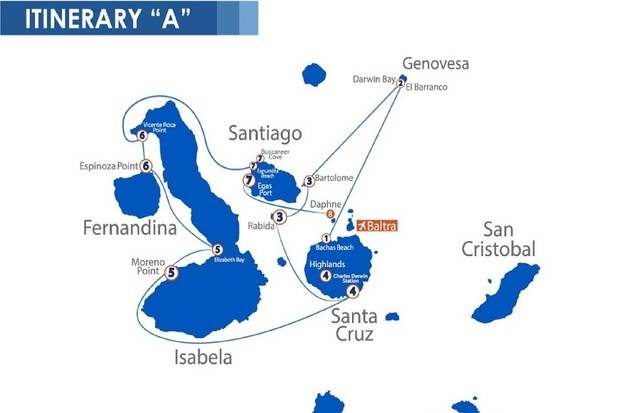
Day 1: Baltra - Bachas Beach
At Baltra Airport you have to pay your Galapagos National Park entrance fee and your luggage is inspected. In front of the arrival hall you will meet your naturalist guide and fellow passengers, and the airport shuttle will transfer you to the ferry across the Itabaca Channel. On Santa Cruz you continue by bus through the lush highlands to the harbour of Puerto Ayora. Our inflatable dinghies (‘zodiacs’) take you the last stretch to the yacht.
Later, navigate to Bachas Beach. The name is “Spanglish” for 'barges' which were wrecked offshore during the World War II. A common first landing site, there is a delightful swimming beach here, with a lagoon behind, and a longer beach for a stroll and wildlife- watching. The saltwater lagoon behind often has great blue herons and small waders such as sander lings and semi-palmated plovers. Both beaches are nesting areas for green sea turtles, which leave tracks in the sand to the back of the beach, especially from November to February. A wet landing and open area on the beach mean one can explore at leisure.
Day 2: Genovesa: Darwin Bay - El Barranco
Genovesa’s horseshoe shaped wall shows unmistakably that we have anchored inside the partly collapsed and submerged caldera of a submarine volcano! The visitor’s site named Darwin Bay is located at the very rear. This compact site shows the extreme varied coastal ecosystems of Galapagos in miniature. The trail starts from the coral sand beach and subsequently passes a zone with salt bushes and mangroves, than crosses tidal creeks and barren lava formations, dry shrub lands, and finally turns on the ridge of some cliffs.
Before landing you will make a dinghy-ride along the eastern arm of the caldera. Sometimes a Galapagos fur seal is resting on one of the shaded ledges. Although there are also seabirds, the real spectacle will find place on top and on the outside of the rim, which provide better perching and nesting places. Therefore you have to hike and overcome the steep stairs from the landing dock to a bush of palo santo shrubs on top.
Day 3: Rabida - Bartolome
Rábida Island is unique because of the red color of the rocks and sand. The volcanic material in this island is very porous and external factors as rain, salt water and sea breeze have acted as an oxidizing agent. A short walk along a trail lead us to a coastal lagoon behind the beach, which permits the observation of land birds, such as finches, doves, yellow warblers and mocking birds. At the lagoon there is a colony of flamingos. The beach is often full with sea lions, and there are good snorkelling opportunities.
The wild romantic volcano islet of Bartolome is among the youngest of the islands, and on a geological scale just recently born out off fire. Although tiny (only 120ha/300ac) and at first sight lifeless, Bartolome offers some of the wildest landscapes and best panoramas in the entire archipelago. To enjoy the postcard view of the idyllic ‘Pinnacle Bay’ you have to climb the stairs to the viewpoint on top of the island (114m/375ft). Enter suddenly a dramatical world of threatening (though extinguished) nearby spatter cones, craters, and lightweight lava droplets that have been spewed out by fiery fountains. The Summit Trail is also ideal to witness how scanty pioneer vegetation such as lava cactus is struggling to take root in the bare virgin lava fields.
Day 4: Santa Cruz Highlands - Charles Darwin Station
Santa Cruz offers excellent opportunities for viewing wild Galapagos giant tortoises, roaming through pastures in the agricultural zone and in the transition zone of El Chato Tortoise Reserve. The pond in the native forest reserve is the most authentic setting, but sometimes also requires an adventurous quest for these silent heavyweights. Than you have to listen carefully for the sound of heavy footsteps and of shrubs being slowly crushed. Most time of their stretched lives is spent slowly and silently, except for a warning hiss, or loud screams during mating, which can be heard from far in the first half of the year.
The Charles Darwin Research Station (CDRS) and the headquarters of the Galapagos National Park Service share same location on the outskirts of Puerto Ayora. From here biological research and indispensable conservation management of this unique archipelago are directed. The complex houses a bunch of interpretation and information centres about the National Park and the Galapagos Marine Reserve around.
Day 5: Isabela: Moreno Point - Elizabeth Bay
Moreno Point tells the continuing story of the famous lunatic lava fields of Sullivan Bay (actually not visited by Catamaran Nemo). This once lifeless lava field becomes dotted with tidal pools and filtration lagoons since parts of the crust have broken and fallen into the undermining lava tunnels.
Elizabeth Bay is located on the east coast of Isabela Island. The bay contains many islets, which can be visited by dinghy or panga rides. Penguins and Blue-footed Boobies can be spotted on the rocky islets. With an abundance of marine life and clear water, the area is perfect for snorkeling and viewing schools of colorful fish, sea lions, and perhaps sharks or whales.
Day 6: Fernandina: Espinoza Point - Isabela: Vicente Roca Point
Espinosa Point is Fernandina’s only terrestrial visitors site, and one of the few locations where you will find some bizarre outgrowths of natural selection. Figurehead is the emblematic flightless cormorant that lives exclusively in the remote west of Galapagos, and could be considered as the ‘holy grail of evolution’. The cormorant had not to fear terrestrial enemies and lets you approach very close. Next generations gradually lost their flying capabilities to become excellent divers. Together with its neighbour, the Galapagos penguin, these are two of the rarest and most vulnerable bird species in the world, with less than 2000 individuals each.
Later, navigate to Vicente Roca Point. Comprised of two separate coves, this site is a large bay with spectacular sea life. Keep an eye out for seahorses, sea turtles, and the strange yet fascinating Mola-mola (sunfish).
Day 7: Santiago: Buccaneer Cove - Espumilla Beach - Egas Port
Espumilla Beach has revived as an important breeding site for turtles, as it is no longer suffering from digging wild pigs. The turtles return year after year to burry their eggs into the cinnamon coloured sand dunes. About two months later (roughly from February to August) the eggs hatch at once. Most vulnerable hatchlings never will reach sea, and form a banquet for predators such as herons, frigatebirds, mockingbirds and ghost crabs.
One of the most famous traits of Santiago are its landscapes of volcanic origin. It is completely uninhabited and it is not suited for crops. It’s also known as San Salvador Island, in honour of the first island discovered by Columbus. It is a great place to see due to the fact that it had a great volcanic activity in the past and because of that, it’s especially interesting for those who love geology and volcanoes. There are many places to visit in this island, and one of the most famous is the Buccaneers Cove.
Dominated by Sugarloaf Hill (395m/1300ft) and named after a former salt mine (1960s), Puerto Egas is the southernmost visitors site along James Bay. Its masterly sculptured coastline of black basalts and polished multi-coloured ash-layers forms a photogenic scenery with collapsed lava tunnels, natural arches, caves and blowholes such as ‘Darwin’s toilet’.
Day 8: Daphne - Baltra
The characteristic offshore tuff cone of Daphne Major looks how a child draws a volcano islet. Perhaps you have already got a first glimpse of it from your airplane window on arrival. Access to the 120m/400ft high islet is restricted because of its fragility and susceptibility to erosion. On your last morning in Galapagos you will make a dinghy-ride around. You can spot large flocks of storm petrels and other sea birds.
Transfer to Baltra airport for your flight back to Guayaquil or Quito.
| Dates | Cabin | From | Special Offer |
|---|---|---|---|
| 09 Jan 2023 - 16 Jan 2023 | USD $3500pp | ||
| Double Cabin | USD $3500pp | Contact us | |
| 23 Jan 2023 - 30 Jan 2023 | USD $3500pp | ||
| Double Cabin | USD $3500pp | Contact us | |
| 06 Feb 2023 - 13 Feb 2023 | USD $3500pp | ||
| Double Cabin | USD $3500pp | Contact us | |
| 20 Feb 2023 - 27 Feb 2023 | USD $3500pp | ||
| Double Cabin | USD $3500pp | Contact us | |
| 06 Mar 2023 - 13 Mar 2023 | USD $3500pp | ||
| Double Cabin | USD $3500pp | Contact us | |
| 20 Mar 2023 - 27 Mar 2023 | USD $3500pp | ||
| Double Cabin | USD $3500pp | Contact us | |
| 03 Apr 2023 - 10 Apr 2023 | USD $3500pp | ||
| Double Cabin | USD $3500pp | Contact us | |
| 17 Apr 2023 - 24 Apr 2023 | USD $3500pp | ||
| Double Cabin | USD $3500pp | Contact us | |
| 01 May 2023 - 08 May 2023 | USD $3500pp | ||
| Double Cabin | USD $3500pp | Contact us | |
| 15 May 2023 - 22 May 2023 | USD $3500pp | ||
| Double Cabin | USD $3500pp | Contact us | |
| 29 May 2023 - 05 Jun 2023 | USD $3500pp | ||
| Double Cabin | USD $3500pp | Contact us | |
| 12 Jun 2023 - 19 Jun 2023 | USD $3500pp | ||
| Double Cabin | USD $3500pp | Contact us | |
| 26 Jun 2023 - 03 Jul 2023 | USD $3500pp | ||
| Double Cabin | USD $3500pp | Contact us | |
**Prices are per person based on twin / shared accommodation.
**Single supplements may apply
Cabin Details
Double Cabin
Double bed, private bathroom (hot/cold water, hand shower and toilet), controlled air conditioning, fan and storage space.
Twin Cabin
Single upper and lower bunk, private bathroom (hot/cold water, hand shower and toilet), controlled air conditioning, fan and storage space.
Triple Cabin
Single upper bunk, lower double bunk, private bathroom (hot/cold water, hand shower and toilet), controlled air conditioning, fan and storage space.
Nemo I Deckplan

Specifications
- Registered Vessel Name: M/SC Nemo Martinica
- Type: Nautitech 82 Sailing Catamaran
- Construction Year: France, 1996; renovated: 2014
- Capacity: 14 passengers + 7 staff/crew members
- Class: Tourist Superior Class
- Naturalist Guide: 1 National Park-certified multilingual naturalist guide
- Crew: 6 experienced, trained and IMO-certified crew members: captain, pilot, sailor, machinist/engineer, cook and bartender/waiter
- Communal Areas: Sundeck, sun terrace, hanging nets at the bow, living room, shaded outdoor dining (alfresco)
- Length: 2,490m/83ft
- Width: 10m/33.34ft
- Number of cabins: 7 twins
- Cabin location: Lower deck
- Machinery: 2 engines John Deere 150 HP
- Amenities: TV, DVD, small library, 3 solo sea kayaks, 1 large zodiac
- Electricity: 110V/220V (ecological lighting 12V)
- Cruising Speed: 12 knots
- Wastewater treatment: 2 Raritan wastewater treatment systems
Whats included?
- On-board accommodation
- All meals, water coffee and tea during the voyage
- Transfers within Galapagos
- Bilingual naturalist guides
- Activities as specified
- Use of kayak and snorkelling equipment
What’s not included?
- International and internal airfares
- Arrival/departure taxes or reciprocity fees, visa fees where applicable
- Travel insurance
- Galapagos National Park fee US$100
- Transit control card US$20
- Gratuities
- Any items not mentioned as included

